|
Newsletter on line. This newsletter, and previous editions, are available on the RUSI Vancouver website at: http://www.rusivancouver.ca/newsletter.html Wednesday Lunches The 15 Field Officers Mess holds weekly lunches, serving a 5 course, ‘homemade’ meal for only $15- you won’t find a better meal - or a better deal, anywhere. If you are in the area on a Wednesday, drop in and join us for lunch. The dress for Wednesday lunches is suit/blazer/sports jacket and tie. Dress for ladies is the equivalent. Your guests are always welcome but don’t forget to tell them about dress requirements BEFORE they come. World War 2 - 1940 John Thompson Strategic analyst quotes from his book “Spirit Over Steel” July 15th: Plebiscites (conducted by the Communist Party, with close supervision by the NKVD and without outside observers) in Estonia, Latvia and Lithuania show a unanimous desire in the three Baltic states for union with the USSR! Who knew? July 16th: Hitler issues Directive 16 for the invasion of Britain; at this time Wehrmacht thinking (along the scale of an assault river crossing writ large) calls for at least 25 divisions to be involved. Prime Minister Yonai of Japan resigns because of military pressure and a cabinet shuffle is in the works. July 17th: A new government is formed in Japan under Prince Konoye and Tojo becomes Minister of War. The British re-route much shipping away from the easy U-Boat and Luftwaffe hunting grounds south of Ireland and in the North Sea – causing much congestion in Liverpool and the Clyde. July 18th: Britain closes the Burma Road into China at Japan’s request. Roosevelt, without any challengers, emerges from the Democratic Convention as their candidate for president for the third consecutive time. July 19th: General Alan Brooke replaces Edmund Ironside as Commander in Chief of Home Forces (Army only); Ironside is sent upstairs as a Field Marshal. Hitler appeals to British common sense in a speech to the Reichstag. The light cruiser HMAS Sydney and five destroyers sink the Italian light cruiser Bartolomeo Colleoni off Crete and send the Bande Nere running. Roosevelt signs the ‘Two Ocean Navy Expansion Act” authorizing the construction of 1,325,000 tons of warships and 15,000 planes. It is very rare for a 51 year old man to even dare to take a parachute training course, but now that Oberst Hermann-Bernhard Ramcke has just transferred into the 7th Fliegerdivision, he intends to try. He will stay with the elite German Fallschirmjäger until he is captured in Brest in September 1944 as the General der Fallshirmtruppe and the holder of the Knights Cross with Swords, Diamonds and Oak Leaves. July 20th: A Luftwaffe Me-110 scores Germany’s first night-fighter kill of the war as it downs a British Whitley bomber, there will be thousands more. July 21st: The USSR formally annexes the Baltic States, making them constituent republics of the Soviet Union. Hitler tells an OKH Conference that Germany must prepare for war with the USSR  North Vancouver's Fell Armoury to Get $1.4M renovation Feds fund heritage building upgrades Brent Richter / North Shore News July 10, 2015 Canadian Forces soldiers listen as MP Andrew Saxton announces funding to improve the JP Fell Armoury in North Vancouver’s Mahon Park neighbourhood. Photo Mike Wakefield The Lt Col JP Fell Armoury in North Vancouver is set to get $1.4 million in refurbishments following a funding announcement from the federal government. North Vancouver MP Andrew Saxton visited the historic armoury on Forbes Avenue on Monday to announce the Department of National Defence would pay for a new roof, boilers, sprinkler system and upgrades to the mess hall for the 1914 building. Vancouver’s Beatty, Seaforth and Bessborough armouries will also be receiving upgrades valued at $5.1 million. The work will be carried out over the next two years. Most of the buildings were built in the first half of the last century. Despite their age, the facilities “remain vital to the readiness and operation” of the armed forces, Saxton said. “Also because (the Fell Armoury) is used on a regular basis by both 39 Combat Engineers Regiment as well as the cadets. It’s an important building in North Vancouver and, because of its age, it’s time to have an update so it can last another 101 years,” he said. The last upgrade was in the run-up to the 2010 Olympics when the armoury received a new floor. 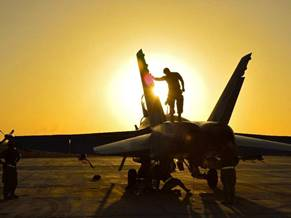 Questions About Squadron Changes in the RCAF David Pugliese, Ottawa Citizen July 11, 2015 Royal Canadian Air Force ground crew perform post flight checks on a CF-18 fighter jet in Kuwait after a sortie over Iraq during Operation IMPACT on November 3, 2014. CF Combat Camera DND / CF Combat Camera, D A knowledgeable reader with military and aerospace connections sent this to Defence Watch in about recent squadron changes in the RCAF. It is an interesting viewpoint: Hi David, As you know, MP&EU (Maritime Patrol & Evaluation Unit) is now 415 Squadron, 433 Squadron has been reformed at Bagotville, and I’m told (but haven’t yet confirmed) that the “super squadron” at Cold Lake will also be split, with the “new” one being numbered as 401 for history and heritage reasons. (That part I like.) Wasn’t the main reason given for consolidating fighter, transport, and patrol squadrons a few years ago that it was necessary in order to redistribute officers (mainly) and other personnel to the new CF Aerospace Warfare Centre (CFAWC)? They said there was no money for adding new people and the only way to staff the new units was to consolidate flying squadrons and transfer the “surplus” personnel to them. Given that DND hasn’t been spending all of its budget and has been returning money to the Treasury and also given that there has been no authorization to increase the size of the RCAF, where are these new people coming from and where is the money to pay them coming from? MP&EU isn’t just being renamed as 415 Squadron. MP&EU was commanded by a major, while 415 is commanded by a lieutenant-colonel, and as a larger unit, it will have more people and more of them will be higher ranks (i.e. more department heads, more majors). Back when the Groups were abolished and Wings were introduced, numerous units that hadn’t had it before were elevated to Squadron status and I wondered at the time why MP&EU wasn’t made a Squadron, but after all this time, I have to wonder why now? Bringing back 433 and giving it half of 425’s assets and personnel also means more people at higher ranks, such as two COs, two DCOs, and two each of the other positions such as weapons and tactics officer, squadron warrant officer, etc. Ditto at Cold Lake when 409 Squadron is split into two squadrons. In the transport community, 437 previously flew two types of aircraft (CC-137 and CC-150), so with it being down to only five CC-150s, it could have been given the CC-177s rather than reform 429 Squadron. When that happened, I also wondered where the extra people were coming from after the earlier statements about consolidating squadrons to free up people for CFAWC, etc, but I thought perhaps the new aircraft type was being used as an excuse. Splitting up the “super squadrons” of CF-188s at Cold Lake and Bagotville are different situations, though, and I have to wonder if 436 Squadron (which had been combined with the previous incarnation of 429) will also be split up soon. I can certainly understand the career aspirations among officers to attain leadership positions and having only two frontline fighter squadrons rather than four cut those opportunities in half (and that seems to be why many cynics believe this is being done), but from an organizational point of view, reducing the number of people with command experience also limits the pool of talent for higher ranks and positions such as wing commanders and AFHQ positions. But the question about how this is being funded now when there was supposedly no money for it before remains, especially when the full budget isn’t being spent and the “extra” money is being returned to the federal coffers to help balance the budget before the election. 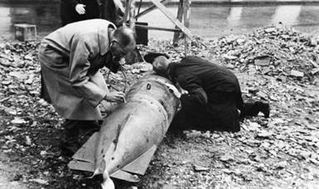 Stuart Archer the Blast Expert Who Protected the Nation Feb 3, 1915 - May 2, 2015. Age 100 May 23, 2015 IT’S perhaps not surprising that when Second World War bomb expert Stuart Archer was awarded the George Cross in 1941 the citation read that he “enjoyed unbelievable immunity from death”. The British Bomb Disposal party at Algiers after an enemy raid in November 1942 REX After all, this was an officer, who within eight months of joining the Corps of Royal Engineers, had successfully dealt with 200 bombs, including having to tackle the first enemy bomb with a new type of delayed-action fuse. Despite the dangers he faced on a daily basis, Archer said he wasn’t afraid. He said: “When you’re sitting on top of bombs, if it goes off, then you’re gone. “I take my hat off to the people who were running into enemy fire. That’s the thing I would have been afraid of.” Born in Hampstead, north London, Bertram Stuart Trevelyan Archer showed a real talent for drawing and studied to be an architect, qualifying as an associate of the Royal Institute of British Architects at the age of 21. For the next three years he worked at the firm Ingram and Son designing pubs for breweries. Although Archer had served with the Honourable Artillery Company before the war, his training in the art of bomb disposal was basic to say the least. Showing him his first unexploded bomb (UXB) his instructor said: “This is a German bomb. It’s the only one we have.” In May 1940, as commander of No 104 Bomb Disposal Section, he arrived in Cardiff and that July was called out to four unexploded bombs that had been dropped on St Athan airfield in South Wales. After supervising the excavation of each bomb he lifted them carefully on to a lorry and drove them personally to an open space to detonate them, later acknowledging he had taken “a hell of a chance”. As the Luftwaffe’s attacks on Britain’s industrial areas intensified, Archer faced his toughest situation when a major blaze broke out at National Oil Refineries in Swansea on September 2, 1940. Four UXBs, one of which was found directly under an oil tank, were hampering firefighters. Despite bombs going off around him, Archer managed to remove a plate from the base of the bomb, dig out the high explosives and recover the all-important fuse intact, which was sent off to the War Office to be examined. After the war he returned to his career as an architect and from 1994 to 2006 served as chairman of the Victoria Cross and George Cross Association. He was awarded the OBE in 1961 and is survived by his three children. His wife, Katherine whom he married in 1939 predeceased him. Stuart is the longest holder of the George Cross, with Chris Finney, the medal's youngest holder  What Happened to the Canadian Army’s TOW 2 missiles? More from David Pugliese, Ottawa Citizen July 21, 2015 A TOW missile system on a Humvee at Fort Pickett, Va., Sept. 12, 2012. Marines assigned to combined anti-armor team, Battalion Landing Team (BLT) 3/2, 26th Marine Expeditionary Unit (MEU), fired the TOW missile system to familiarize themselves with the safety and firing procedures associated with it. BLT 3/2 is one of the three reinforcements of 26th MEU, which is slated to deploy in 2013. In a recent article I wrote, there were details about Canadian Army equipment that had been declared surplus and was either being destroyed or sold off. Included among that equipment were the TOW 2 missiles and related systems purchased by the Army around 2009 for $100 million. According to documents obtained by Defence Watch the stocks included 592 TOW 2 (analog) missiles, 897 TOW 2 (digital) missiles and 662 TOW 2B (top attack missiles). The problem was that no one at National Defence Headquarters in Ottawa could readily say for certain what happened to the weapons. The thought was that they were sold but no one had any details. Now Department of National Defence spokesman Dan Blouin has come back with the answer. He tells Defence Watch that the U.S. Marines purchased all of Canada’s TOW 2 missiles. There were no details on the price the Marines paid. But sources tell Defence Watch the Marines got a real deal, picking up the weapons for a fraction of the $100 million price. The Canadian Army decided to get rid of the TOW missiles after they were required by the Harper government to find cost-savings Marines assigned to combined anti-armor team (CAAT), Battalion Landing Team (BLT) 3/2, 26th Marine Expeditionary Unit (MEU), fire a TOW missile system at Fort Pickett, Va., Sept. 12, 2012. This training is part of the 26th MEU’s pre-deployment training program. BLT 3/2 is one of the three reinforcements of 26th MEU, which is slated to deploy in 2013 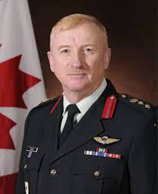 Colonel Tim Young Appointed Regimental Colonel, RCA On the 24th of June 2015, Colonel Timothy (Tim) R Young, CD, became the new Regimental Colonel for the Royal Regiment, taking over the responsibilities from Colonel JMD Bouchard. The Regimental Colonel plays a key role in the management of the Royal Regiment as an institution. Together with the Director of Artillery, Colonel TJ Bishop, the two colonels manage the Royal Regiment on five lines of operation that are outlined in the Royal Regiment of Canadian Artillery Family Strategy. While the Director manages the first two lines of operation - developing capability to sustain the regiment in operations, and assure excellence in leadership through succession planning, the Regimental Colonel manages the remaining three. They are - nurturing the family institution, connecting with Canadians, and celebrating our heritage. Whether it is supporting gunners and their families either regular, reserve or veterans, communicating with Canadians from coast to coast, or planning and supporting key events in our rich heritage, the Regimental Colonel is the de facto steward and authority when it comes to implementing the guidelines and orientations promoted in the family strategy. For more details, Colonel Young, is in his 36th year of service to the Royal Regiment and is well positioned to assume the responsibilities of the Regimental Colonel. He began his career in the ranks as a Reservist in the 56 Field Regiment in Brantford, Ontario (Master Bombardier). As a Junior Officer, he developed his gunnery skills as an Airborne Gunner in 2 RCHA, and holds parachute wings from five different nations. He further developed is gunnery skills becoming an Instructor-In-Gunnery and later the Chief Instructor-In-Gunnery at the Artillery School. On operations, Colonel Young commanded F Battery, the third Battalion, The Royal Canadian Regiment Battle Group in Bosnia-Herzegovina in 2001, and as the Commanding Officer of 1 RCHA, he force generated all artillery support for Task Force Afghanistan in 2009. He served a tour in Afghanistan in 2009 as the Chief Operational plans in Task Force Kandahar. On domestic operations, he deployed to the Ice Storm in 1998, floods in both Ontario and Manitoba, counter drug operations with the RCMP, and the 2010 Winter Olympics. Colonel Young has held numerous staff appointments over his career, most notably - the Director of Land Requirements 2, a strategic planner on the Army Staff, an Executive Assistant to the Chief of Military Personnel, and a Resource and Business Planner for the Vice Chief of Defence Staff Group. Colonel Young holds two graduate degrees; a Master in Defence Studies from RMC, and a Master in Business Administration from Athabasca University. He currently holds the appointment of Director Army Personnel Management (G1) of the Canadian Army. We are all pleased to have Colonel Young as the senior Gunner looking after Regimental Family matters for the RCA. Good Shooting, Tim! PNE 2015 HEROES’ OPENING WEEKEND. NEW this year – includes a free guest SATURDAY, AUGUST 22 & SUNDAY, AUGUST 23 - 11am- Late FREE gate admission for First Responders and a guest. Promotion is to honor those who put their life on the line by actively responding to the front line emergencies occurring out in our communities. Valid for regular member police (City and RCMP), ambulance workers, firefighters,military, search & rescue and coast guards plus one guest. First Responder must present a valid First Responders service card at the gates. Guest does not require a service car  Who is it? Last Week: According to other photos in this series, the troops were coming back from Hatzic Lake, just east of Mission. In that case they would be somewhere on Hwy 7 which went from Agassiz to Vancouver. In those days it went through Mission to Maple Ridge (then a series of villages) then ran through Port Coquitlam, Coquitlam and Port Moody along Dewdney Trunk Road. Then along Barnet Highway to Hastings Street. So the photo was probably taken somewhere along that route. No IDs on the soldiers. After the US entered the war, Harley Davidson, starting in 1942, built motorcycles for the military based on their WL model. The American version was the WLA and the Canadian, WLC. For military purposes, the bikes were painted olive drab or black, blackout lights and an oil bath filter were added and the crankcase breather was changed to facilitate fording. Accessories included a heavy duty luggage rack, ammo box, leather gun scabbard, skid plate, leg protectors and windshield. Allied motorcycles were almost never used as combat vehicles or for troop mobility and so were rarely equipped with sidecars, as was common on the German side 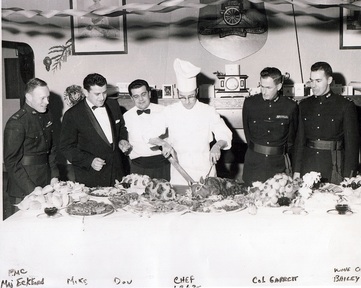 This Week: Time flies, and this column has now been running for almost two years. One great problem for historians is that, as memories fade, and then disappear with death, those events and people that were once so well-known are reduced in number to a point where only one or two in several million are memorialized. One purpose of this column is to record some of those memories so that these names, of people great and small, will have a face for the future. This photo was possibly taken in 1962 as such is what possibly is written below “Chef” (the original print has been cropped). The date is further attested to by the fact that Lt Col Garrett was CO of 15 Field from 1959 to 1962. On the far left is Major Eckford, PMC at the time, and a wartime friend of my late father. The wines officer, Lt. Bailey, who eventually became CO, still comes to the lunches from time to time. Mike and Don are names of characters of whom I’ve heard, but never met, so the museum would like to know more about them, and, if possible, about the chef. Were you a mess regular in the 1960s and do you have some stories to tell? If so, drop a line to the author, John Redmond ([email protected]), or to the editor. If the stories are a bit naughty, don’t worry. Museum curators are the soul of discretion. Finally, if you are really up to it, and have a great cache of mess and regimental stories that you think would fascinate future generations, why not consider setting up an appointment with a museum chap or chapette for an interview? By the way, whatever happened to that little piggy that the chef is starting to carve? From the ‘Punitentary’ How do mountains see? They peak. Murphy’s other Laws Elephant: a mouse built to government specifications. Quotable Quotes Don't knock the weather; nine-tenths of the people couldn't start a conversation if it didn't change once in a while. - Kin Hubbard  The CFOne Card Everything you need to know about CFOne! The CFOne card is the one card you need to access programs and services delivered by CF Morale and Welfare Services (CFMWS). The CFOne card consolidates the functions of several cards into a single card. It easily and accurately confirms your membership within the Canadian military community of one million strong and provides you with access to both the CANEX Rewards Program (the program that rewards you for shopping at CANEX) and the CF Appreciation Program (the official discount program of the Canadian Armed Forces community). In the future, it will also be the one card to support membership to PSP sports, fitness and recreation programs and services at Bases and Wings across the country. In addition, the CFOne card will provide membership and confirm access to messes and specialty interest activities, such as golf, curling and sailing clubs. All members of the Canadian military community of one million strong are eligible for the CFOne card. You are eligible to receive a FREE CFOne card if you are part of one of the following categories:
www.cfmws.com/en/OurServices/CFOne/Pages/default.aspx  THUNDER IN THE SKIES: A Canadian Gunner in the Great War An extraordinary, newly discovered account from an ordinary Canadian on the ground in the crucial battles of the First World War. What was it like to be a field gunner in the Great War? Drawing on the unpublished letters and diary of field gunner Lt. Bert Sargent and his fellow soldiers, Thunder in the Skies takes the reader from enlistment in late 1914, through training camp, to the Somme, Vimy Ridge, Passchendaele, the Hundred Days Offensive, and home again with peace. Sargent and field gunners like him, posted just behind the front lines, spent grueling months supporting the infantry in the trenches. Theirs was a very different war, as dangerous or more at times as the one on the front lines. As an ordinary Canadian writing letters home to ordinary people, Sargent gives a wrenching, insightful account of a tight-knit band of soldiers swept up in some of the most important battles of the war that shaped the twentieth century. Thunder in the Skies details the daily life of artillerymen fighting in the First World War in a way no other book has before. Available for purchase beginning 29 August, 2015. |
Archives
June 2024
|


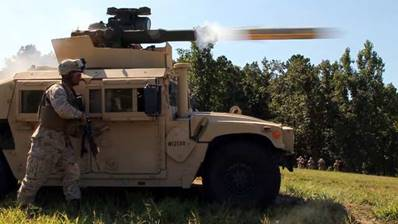


 RSS Feed
RSS Feed